This article is part of The Reading List, a recurring column in which we encourage you to take your enthusiasm for a particularly groovy movie or TV series and direct it into a wide array of extracurricular studies. This entry explores the Jupiter’s Legacy comic as well as the many other Mark Millar stories you’ll want inside your brain after watching the Netflix show.
What if, though? It’s a popular question in comics. What if Captain America never fell in the ice? What if Kal-El’s ship crash-landed in the Soviet Union instead of Smallville. Imagining a character or a world from a slightly different angle gets the fan’s brain buzzing.
Mark Millar has made a career from slightly shifting comic book concepts and bending them to his gleeful will. With The Ultimates, he brought The Avengers into our post-9/11 hell, injecting a recognizable militaristic edge into their superheroism. It basically served as the blueprint for the MCU. His Kick-Ass envisioned the reality behind a comic book fanboy putting on the tights and taking his four-color morality to the very ordinary horror of organized crime. Wanted supposes a world where supervillains reign supreme and good guys are not a thing.
Millar’s playful retooling of hard-worn ideas makes his stories ideal for adaptation. The audience can read the shorthand and skip quickly ahead and into the weirder bits. His latest page-to-screen jump, Jupiter‘s Legacy, depicts a superhero family in crisis. Little generational squabbles become titanic brawls. Suffer the meek that surrounds their feet. You thought the Greek gods were messed up; wait until you get a load of this dysfunctional family unit.
Jupiter‘s Legacy is a kitchen-sink comic. Millar takes everything he loves and jams it all inside. We’ve got nods to the obvious superhero stuff, but also Star Wars, King Kong, and classroom mythology. All the stuff that sparked his childhood imagination finds its way into some corner of the comic, and then he twists it, often perverts it, and has a giggle. Somewhere in the mischievous translation, Millar unlocks genuine heartache and existential agony.
That’s Mark Millar’s bag. He’s a demented little demon slinging toys in his sandbox. It’s an awe to watch, but then suddenly, a Tonka truck hits you in the head, and you’re crying. Millar’s comics go for it. They’re wild twists on familiar genres and tropes, and often the ideas have ya goin’ “whoa” while the emotions leave you in a puddle.
Based on early glances, the Jupiter‘s Legacy Netflix adaptation appears to cling closely with the comic books. They’re matching costumes for costumes and shots for panels. If you dig on it, you’re going to want to hop into the comic books immediately. The Reading List is here to help. While the comic book series is the longest one amongst the Millarworld publishing line, it’s still only a handful of trade paperbacks. You’ll want to want to read all of those, but from there, you gotta bounce around.
The comics listed below cover a wide range of stories, all starting from a familiar place but branching out into bizarre new realms. Some have movies already in motion; others are simply waiting for the green light. And that emerald aura will certainly come.
Jupiter’s Legacy
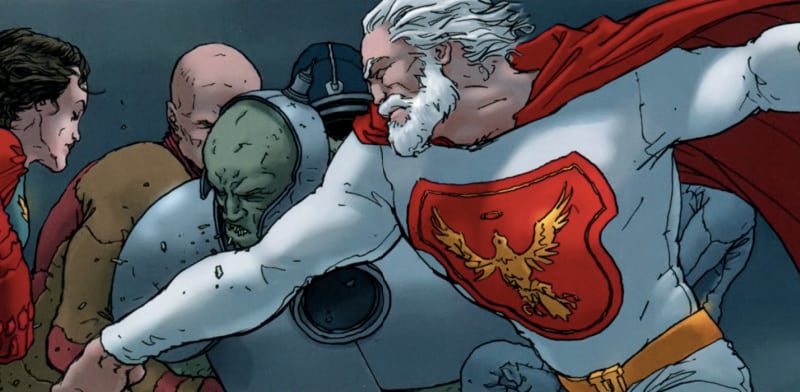
Sheldon Sampson lost everything in the stock market crash of 1929. Some years later, an island appears in his dreams, and he charters a boat in search of its location. Along with his brother and a few college friends, they locate the lost land, which grants them catastrophic power. Sheldon is the series’ Superman stand-in, and he takes his might back to the United States, where he believes he can restore the country to its splendor. Truth, justice, and the American Way. Righteous as hell.
Then, the kids come. Sheldon’s children, Chloe and Brandon, don’t hold his ideals. They use their gifts to maintain their celebrity, but they can’t combat the malaise brewing within them. Outside and inside forces begin to converge, and godly problems become Earth’s problems.
The main Jupiter‘s Legacy comic books are collected within four tight trade paperbacks. They read like lightning and they look even better. Frank Quitely, who originally collaborated with Millar on The Authority, relishes every panel in these stories. Not a line is wasted—every scratch, meaningful. Quitely beautifully balances the mundane and the divine.
Jupiter’s Circle
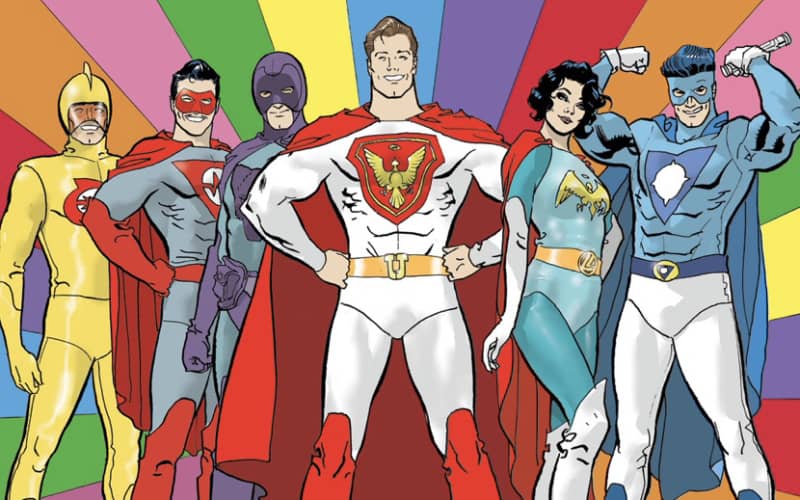
Jupiter’s Circle is the prequel comic, told in two volumes. It sticks to the goings-on of Sheldon Sampson and the original gang affected by the island. Consider these the glory days for our heroes: the fifties and the sixties. The comic fills in some of the gaps suggested by the main title, explaining how certain familial relationships became as strained as they are when Jupiter’s Legacy kicks off. Here is where the comic feels the most like Millar’s Watchmen as Sampson’s super-team, The Union, smashes against historical moments. Their presence shifts a few things, but maybe not as much as you would suspect.
Jupiter’s Legacy: Requiem
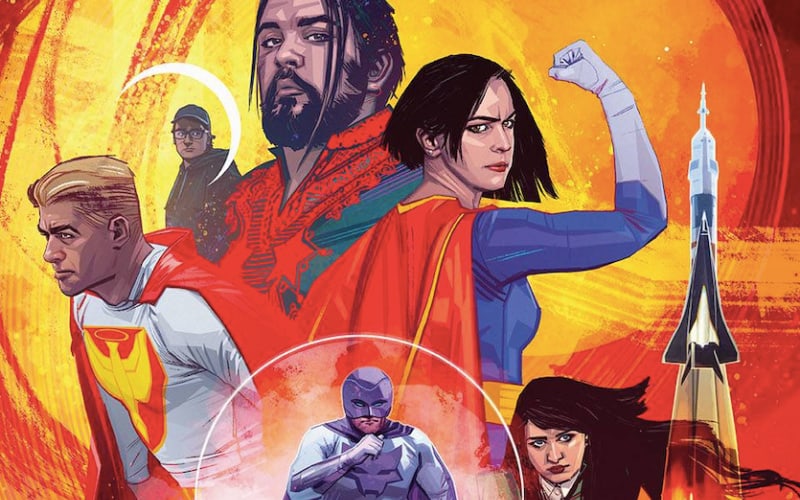
This is the end. My only friend, the end. And yes, this is a bit of a cheat as the comic is technically not out yet. The first issue of the twelve-issue maxi-series is scheduled to launch in June, and it promises to be Mark Millar’s final statement on the characters he created a decade ago. What’s the deal with the island? Why did it appear? How did it grant Sampson’s Union their powers? The comic is meant to span a massive swath of time, going back to the begging as well as the present and the future. Millar has exclaimed in interviews that his dream for Jupiter’s Legacy comic books was to tell “the biggest superhero story of all time.” Requiem is the pay-off, but he’s not using Frank Quitely to do it. Instead, he’s got Tommy Lee Edwards delivering the grand vistas. Expect the expected—big, big, big, but watch out for those small jabs too. That’s where Millar always gets ya.
Nemesis
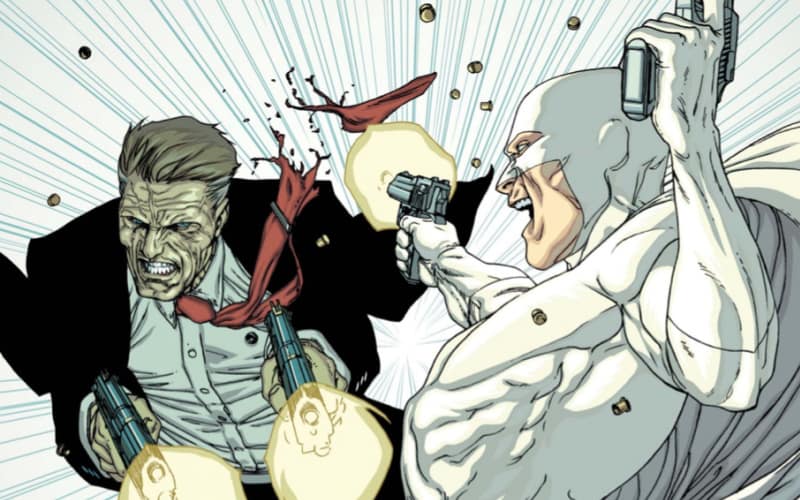
Comic fans have been waiting for the Nemesis movie. Co-created with artist Steve McNiven, the story carries a touch of Wanted in its DNA. The comic was originally sold under the what-if question, “What if Batman was the Joker?” Nemesis is just as rich, inventive, dedicated, and as smart as the Dark Knight, but pounding beneath his extremely muscular chest is the blackest of hearts, and his diabolical brain is empathy-free. Nemesis is an ugly sit, but that’s often where Millar excels. As you’re reading, you’re laughing, you’re cringing, you’re attempting to keep your jaw off the ground. You don’t put it down, though.
Huck
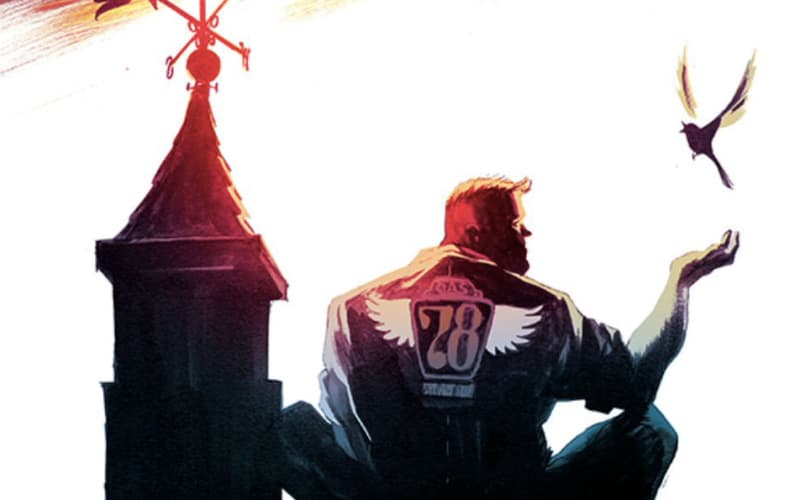
Huck is another Superman slide. One created in response to the author’s traumatic reaction upon witnessing Zack Snyder’s Man of Steel. As Millar saw it, and wrote about it in an article entitled “How Man Of Steel traumatized me so much I created Huck,” comic books and comic book movies reached their obsession with cartoonish ultra-violence when Clark Kent popped Zod’s neck on screen. Huck is Smallville’s Clark Kent. He’s a mild-mannered gas station attendant who tries to do one good deed a day. Sometimes that’s rescuing a cat out of a tree. Other times it’s Huck charging into battle to rescue a terrified G.I. The town knows what he’s up to, but the rest of the world doesn’t. Huck is a sweet, thoughtful examination of spandex heroics.

0 comments:
Post a Comment